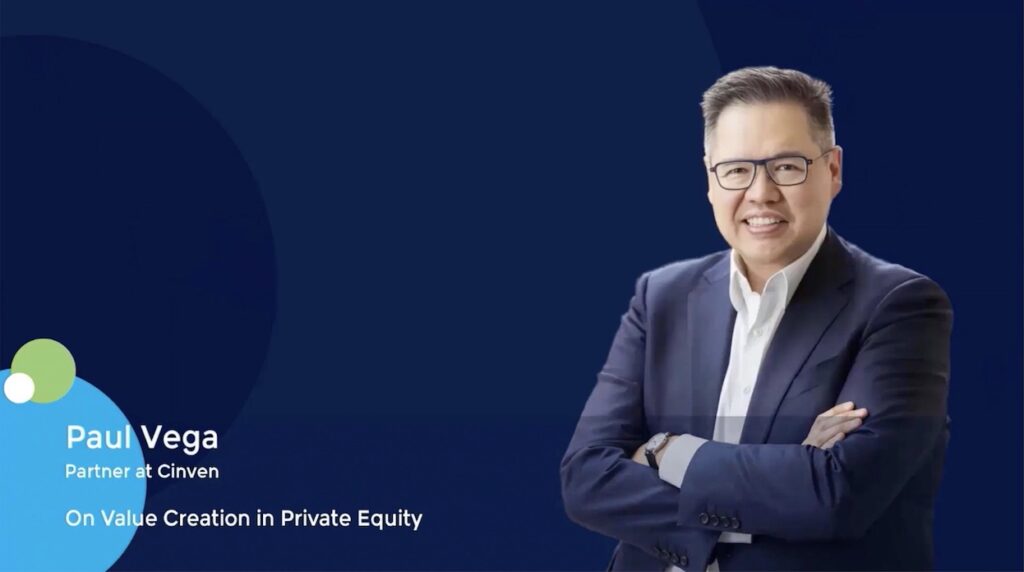PE fundraisers drawn to deep pockets, flexibility, long-term vision of Asian insurers
Launched in 2013 by an employee of AXA’s private equity unit, Ardian has a unique perspective on how global insurance is powering the industry. The firm, which now has USD 128bn in PE assets under management, sees Asia as a fast-growing part of the story.
With expanding pools of liabilities in their core businesses, insurers across the region are ramping up allocations to the asset class – to the point that Jason Yao, Ardian’s head of Greater China, regards them as the most active non-sovereign institutional investors. Until about 10 years ago, most didn’t participate in private equity at all; in the last five years, uptake has been substantial.
“We’ve had the top six Asian insurance companies as our clients in the past three years, and they’re all very active in private equity because the long holdings match their expectations,” Yao said. “They also tend to underwrite their premium insurance products quite aggressively, so they need to look for higher returns.”
Much of the optimism is based on the size of the institutions themselves. Even relatively small insurance companies will manage anywhere from USD 15bn to USD 40bn in assets.
When an institution in this middle of this size bracket has an allocation allowance to PE of 5% – the generally perceived average across Asian jurisdictions – it represents around USD 1.5bn. A five-year plan would see USD 300m deployed per year. Ticket sizes range from USD 30m to USD 60m, translating to 5-10 fund commitments a year.
The smallest players are not yet among the most active in PE, but they’re starting to enter the mix, primarily via relatively conservative strategies.
Rede Partners, a placement agent that works intensively with insurance companies, estimates that about 20% of the capital it has raised for GPs out of Asia since 2021 has come from insurers. That’s on par with pension funds and second only to sovereign wealth funds.
“Asian insurers’ appetite for PE is probably 80% buyout at the moment, mostly for the US and Europe. Asia wasn’t on the docket even two years ago, but it’s starting to feature a little bit more now,” said Charles Wan, a partner and head of Asia at Rede.
“Every investor has been overexposed to the US in the last decade and particularly after the Liberation Day tariffs. So, allocations are a little bit more balanced now, and there’s a bit more exploration away from the very large-cap managers into the mid-cap space. That’s on trend with other types of LPs.”
Deeper market
In 2015, investment services and accounting firm Clearwater Analytics estimated that 7% of the balance sheet assets of insurance asset managers globally were in private markets. That figure grew to 9% in 2020, then 15% in 2022. As of last July, it was 21%. Within private markets, the portion allocated to private equity has grown from 30% in 205 to 39% in 2025.
Clearwater, which claims to service 60% of mid to large insurance companies in the US, is responding to this growth in Asia by expanding its Hong Kong office, which opened in late 2024 and now has 80 staff. Shane Akeroyd, chief strategy officer at the firm, described Hong Kong as the region’s insurance hub and an attractive base for managing portfolios from China, the world’s second-largest market.
“With insurance clients, every conversation we are having at the moment is either, ‘We would love to do more alternatives,’ or ‘We already have an alternatives business, and we would love to do more,’” he said. “This is a secular trend that is not going away. We are at the very early stages of this journey, and it is not just happening in North America and Europe – it is significantly in Asia.”
Blackstone is arguably the leading actor in this theme. It is building out an insurance-focused talent base in the region under its broader BXCI credit and insurance umbrella, expanding teams in Tokyo, Sydney, Hong Kong, and Singapore.
The firm manages more than USD 250bn on behalf of insurers globally across private credit, liquid credit and other strategies, according to its 2Q25 earnings report. That’s a 20% year-on-year increase.
CVC Capital Partners and Oaktree Capital Management are also among the names said to be aggressively collecting insurance talent as part of an Asia push. All three firms either declined to comment for this story or did not respond to a request for comment.
Their agenda is largely recognized as a charm offensive and educational exercise to help lower-tier Asian insurers not yet active in private equity get comfortable with the asset class. It’s also seen as essential to navigating Asia’s varied regulatory regimes around insurance allocations, as well as a reflection of maturing GP-LP dynamics in this space.
“Instead of a more transactional relationship, it’s turning into more of a collaboration where the insurance company wants to have a say in how you recut the whole portfolio,” said a banker in the financial institutions services unit of a global investment firm.
“This is borrowing from what people have done in the US. It’s basically a holistic cooperation across the insurance company and asset manager.”
Recent activity in this vein includes Blackstone partnering with UK-based L&G with a view to providing investment-grade private credit solutions to support the insurer’s USD 1.4trn pension risk transfer and annuities businesses. In Asia, Apollo Global Management has partnered with FWD Singapore to launch an insurance product aimed at high net worth individuals.
Regulatory ramifications
This kind of joint product innovation, including hybrid strategy offerings, is largely about accommodating insurer demand for higher yields without incurring an unnecessarily high capital charge.
In some markets, increasing demand for such products is a response to Risk Based Capital Framework 2 (RBC 2), a set of Basel-like rules for insurers applicable in Hong Kong and Singapore, among other markets.
Alexandre Schmitz, CEO of Asia-focused placement agent A2Z Private Capital, observes that under RBC 2, private equity investments can attract capital charges that are several times higher than public equities. Even if the opportunity has an attractive IRR, the effective return after capital costs may be too low.
“Insurers may self-impose internal limits on PE exposure because RBC 2 penalizes them heavily,” he said. “Some insurers may only invest via fund-of-funds, co-investments, or highly seasoned funds to reduce perceived risk.”
The increased capital requirements, regulatory scrutiny, and liquidity risk issues that come with private equity are also translating into more exacting demands among insurers in terms of accounting, reporting, and risk management functions. This has prompted global consultants that act as external managers for insurance companies to extend their offerings into back-office services.
The biggest names in this space include Hamilton Lane, Adams Street Partners. StepStone Group, Albourne Partners, and Cambridge Associates. As they engage insurers with growing businesses, it has encouraged them to expand from traditional gatekeeping duties around GP access to areas such as specialised due diligence, portfolio monitoring, and regulation compliance.
“Ten years ago, we could just help insurance companies tap into the market. Now, most of them in Asia already have relationships with GPs and processes in-house to evaluate funds, so they can even evaluate the middle-market GPs,” said one global gatekeeper. “We have almost become a solution provider for their portfolios.”
Regulatory complexity around Asian insurers is also being interpreted as an opportunity by managers of country funds in the region. Nainesh Jaisingh, founding partner and CEO of Affirma Capital, noted that some global insurers operating in Asia collect premiums locally and are required to deploy that capital in-country. China and India are the prime examples.
“That is real, long-term money. It will find its way into the hands of PE investors. This is why the US market is so deep and such a predictable exit market. That’s beginning to happen here as well,” he said.
“It’s part of the critical mass in terms of wealth creation. People are buying insurance, so the premiums are stacking up. That drives local money. We have so many LPs, insurance types, that say, ‘We have local operations, and we can only invest locally. You should talk to people in these markets about positions in your funds that may be country focused.’”
Local needs
Targeting Asian insurers from the GP perspective is all about understanding their conservative nature. In addition to preferring buyouts, developed markets, and lower counterparty risk in the form of established GPs, emerging areas of interest such as middle-market strategies must present compelling risk-adjusted returns with less sensitivity to global macroeconomic movement.
Most industry professionals contacted for this story pegged insurers’ expected returns from private equity in multiple terms at 2x, although 1.7x is of interest in hybrid strategy offerings that include a yield-generating component.
The largest Asian insurers are decidedly global outfits and represent a mix of sophisticated requirements and flexibility in terms of GP engagement.
HSBC Life, the Hong Kong-based unit of the UK financial services giant, targets PE based on core factors such as track record, fund terms, alignment of interest with GPs, portfolio diversification, vintage year pacing, and macroeconomic context.
Global CIO William Chan said the firm could accommodate a broad range of cheque sizes to satisfy its portfolio construction and diversification goals. This includes the ability to tailor commitment size to gain access to preferred strategies. At a time when many GPs pursue insurers due to their lower reliance on distributions to paid-in (DPI), Chan added that HSBC Life was placing more emphasis on DPI.
“HSBC Life’s private equity portfolio has grown in scale due to both insurance premium influx and sizeable allocation. We have broadened our commitments to a diversified pool of leading fund managers while continuing to focus on our convicted sectors, enabling us to access high-quality opportunities even in challenging market cycles,” he said.
“Looking ahead, we envisage more attractive risk-adjusted return opportunities emerging in this space – for example, GP-led secondaries and co-investments – to align with our long-term return objectives.”
Five industry professionals contacted for this story identified Japan as the first and most prospective port of call for GPs shopping for insurance capital across Asia. Nippon Life, Japan Post Insurance, Dai-ichi Life, Tokio Marine Nichido, Sumitomo Life, and Meiji Yasuda Life are commonly listed as the top names and variously open to middle-market strategies.
Ricardo Felix, head of Asia Pacific at placement agent Asante Capital, said his firm has raised capital from Japanese insurers for funds in India, Southeast Asia, and Australia. They generally use global gatekeepers, but also local consultants such as AI Capital.
Global insurers with operations in Japan are similarly active, including AXA, MetLife, and Aflac. Propelling everything is the steady march of the underlying insurance industry. Gross written premiums in the country are set to climb 17% between 2025 and 2029, when they it will hit JPY 63.4trn (USD 430bn), according to GlobalData.
The Japanese economic value-based solvency rule (J-ICS) – a regime for evaluating insurers’ financial health being introduced this year – is the only regulatory spoiler of note. But it is expected to be more relevant to private debt than private equity. Currency risk is a subtler wildcard.
“It’s a very good market, but let’s be clear. For five years, people have lost significant amounts of capital due to the currency effect,” A2Z’s Schmitz said.
One head of private equity at a Japanese corporate life insurer emphasised consistency in manager selection. The investor said that having less focus on DPI allowed the firm to focus on long-term results and GP merits around conservative valuation policy, value creation abilities, exit optionality, ability to pivot, and fundamental deal origination capacity.
The firm considers US and European middle-market funds an important part of its portfolio. Cheques can go as small as USD 10m but are generally USD 40m-USD 50m. Co-investment is an emerging interest, as are hybrid PE-credit strategies.
“This is a perfect time to test our manager selection. In strong markets, there is not much difference between excellent and so-so managers. Turbulent times bring out big dispersions,” the head of PE said.
“We’re interested in these factors because insurance companies don’t pursue the highest possible return. Our aim is to get a consistent return for a long time, with PE adding spice to our dominant fixed-income assets.”
Around the region
Regulations cast a shadow over many other markets. This includes China and India, where investment in global funds is restricted, Australia, where visibility is reduced on illiquid asset investment allowances, and Taiwan, where commitments to PE are capped at 3% of total assets. This has contributed to an active secondaries market in Taiwan, but insurers are otherwise on pause.
Southeast Asia is seen as vulnerable to RBC 2 pressures, yet the leading players, including Great Eastern, Income Insurance, and Eastspring, are considered active.
“We haven’t come across any deal-breaker issues with local regulation of insurance companies in how they allocate or any situations where they’re bumping up against an overall portfolio allocation restriction,” said James Ford, a partner in the Hong Kong investment funds practice at law firm Ashurst.
“Most of the issues are around where they can make substantial control investments, but those are usually manageable. I think regulators across the region recognise that insurance companies need to participate in our industry, so there is usually a way to make it work.”
South Korea is often framed as inhibited by foreign currency holding limits that restrict local insurers to local managers. Still, the market is commonly cited as the most attractive hunting ground for fundraising GPs after Japan, largely due to the recent advances of key players such as Samsung Fire & Marine Insurance.
Samsung Marine was a late starter in alternatives, making its first investments in 2014 and launching the programme in earnest in 2018 with a budget of about USD 80m. Now the annual budget is USD 700m, and the private equity and private debt portfolio amounts to almost USD 4bn. This includes global buyouts and domestic venture capital.
“A lot of LPs are chasing after private credit. The mezzanine market is very slow, so we wouldn’t do mezzanine for now. It’s probably a decent return, but we’re hungry for more return,” said Yeon Jung, Samsung Marine’s portfolio manager, who joined the firm in 2021 from National Pension Service (NPS).
About one-quarter of Samsung Marine’s PE assets are buyouts; one-third is in secondaries; and venture is just under 10%. The rest is credit. The plan is to lift private equity and private debt from around 6% of overall assets currently to 14% by 2030. Jung’s background and connections from NPS mean Samsung Marine can pursue this goal without gatekeepers and placement agents.
“Our risk-return profile is very different from our Korean peers because we have a strong corporate balance sheet and constant cash flow from the insurance business, the largest in Korea,” she said.
It’s a succinct expression of what makes insurance attractive to private equity, perhaps especially in the current market. Insurers tend to look at their exposure to the asset class from an annual return perspective, so IRR is a more relevant performance metric. It’s hands-off capital, sticky and patient, usually offering sizeable tickets.
Asante’s Felix describes domestic Asia Pacific insurers as traditional LPs. Notwithstanding the talent buildouts by the likes of Blackstone, GPs don’t have to have a strategic angle or offer a lot of co-invest to approach these investors. As long as there is product-strategy alignment and the regulatory environment is amenable, the process is less onerous than with many other LPs.
“If you’re talking to the top five players in Hong Kong, top two in Australia, top three in mainland China, or top four or so in Japan, Singapore or Taiwan, you’re typically speaking to a small team of experienced PE professionals and you don’t have to speak the language of insurance to get them comfortable with a fund opportunity,” Felix said.
“They already know what they’re doing, and it’s a nice straightforward process.”












